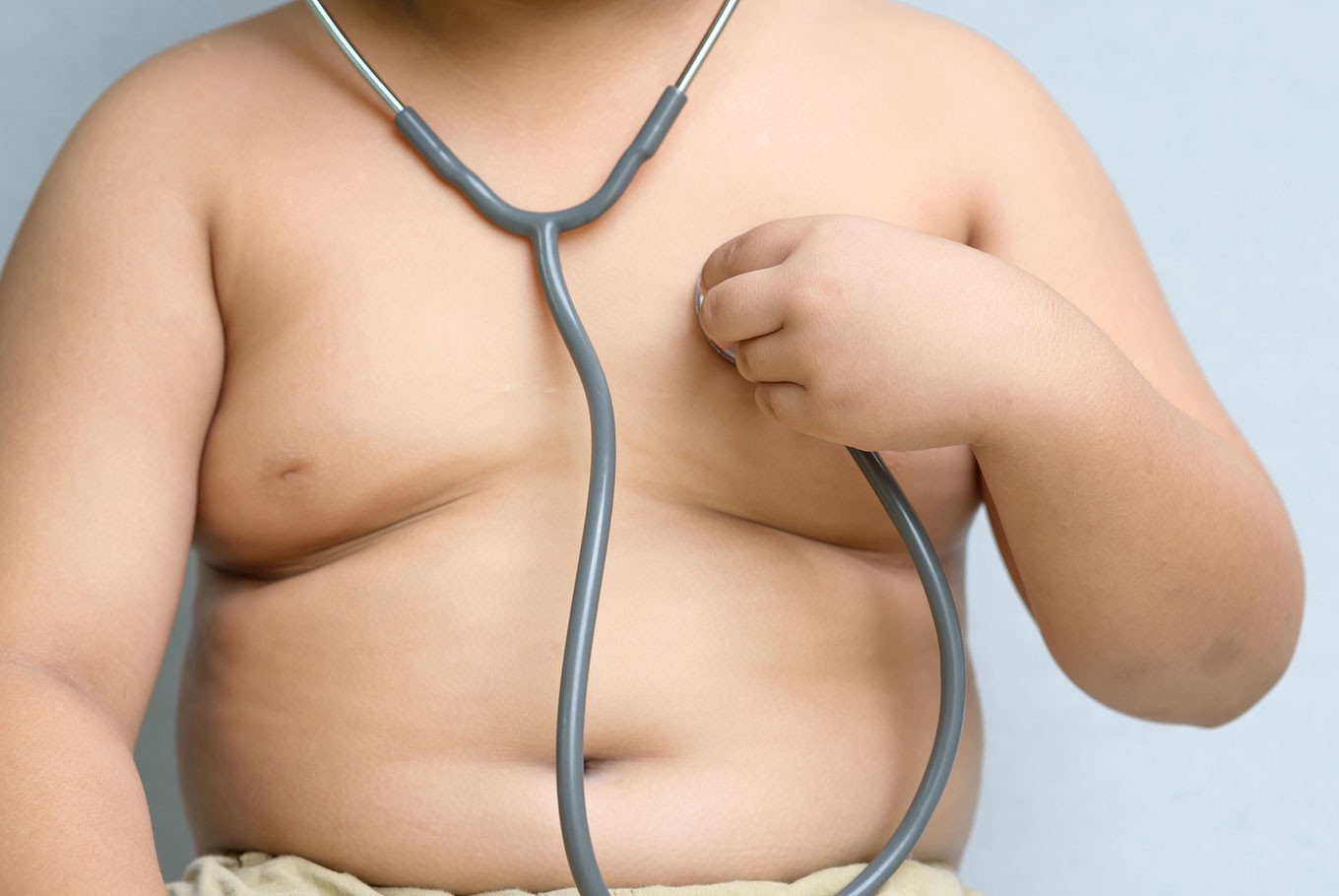Popular Reads
Top Results
Can't find what you're looking for?
View all search resultsPopular Reads
Top Results
Can't find what you're looking for?
View all search resultsHefty children do not equal healthy children
As a parent, you might be satisfied about having a rather stout child; you may think you have succeeded in feeding them and supporting their growth. People around you may also be fond of such a cuddly and adorable child. However, a well-fed and overweight child is not equal to a healthy child.
Change text size
Gift Premium Articles
to Anyone
Not all hefty children are healthy.
As a parent, you might be satisfied about having a rather stout child; you may think you have succeeded in feeding them and supporting their growth. People around you may also be fond of such a cuddly and adorable child. However, a well-fed and overweight child is not equal to a healthy child.
Health risks faced by overweight children
Health risks can haunt overweight children, either with long term or short term problems. Among them are:
Type 2 diabetes mellitus
Overweight or obese children have an increased risk of glucose tolerance disorder, meaning that the child could develop Type 2 diabetes mellitus in the future. Studies conducted by the National Health and Nutrition Examination Survey 2005-2006 in the US showed that pre-diabetic levels among overweight children were 2.6 times higher than children of normal weight. Studies by the National Longitudinal Study of Adolescent Health also showed that diabetes risk was much higher in adults who were obese in their pre-adolescent/teenage years than those who became obese in adulthood.
Asthma
Overweight children often have respiratory problems, one of which is asthma. A study has shown that children who are obese have a 40-50 percent higher chance of asthma than those of normal weight. Another study showed that children and teens around 6 to 19 years of age who have a higher than average Body Mass Index (BMI) can develop normal to acute asthma.
Obstructive sleep apnea
Studies that relate child and adolescent obesity to obstructive sleep apnea show a prevalence of 60 percent. A study in Taiwan showed that the risks of obstructive sleep apnea were higher than those in normal weight children. Obstructive sleep apnea is a common disorder in which you have one or more pauses in breathing or shallow breaths while you sleep.
Heart disease risk factor
Research from the Bogalusa Heart Study in the US showed that 70 percent of children aged 5 to 17 years who were obese had at least one risk factor that related to heart disease. The risks were high cholesterol, high blood pressure and glucose tolerance disorder. Another study concluded that children with obesity not only had a higher risk of heart attacks in adulthood, but also during their adolescent years.
(Read also: Overweight correlates with faster aging of the brain: Study)
Mental health disorders
Low physical activity, low self-esteem, unhealthy body shape and eating disorders are among the many factors affecting obese children. It is proven that children with obesity have higher chances of low self-esteem, which can affect quality of life. Research conducted by the Millennium Cohort Study showed that child obesity related closely to emotional and behavioral disorders from a very young age, with males having certain exclusive risks.
Bone and muscle problems
Being overweight contributes more pressure to bones and muscles, proven by the high rate of complaints among overweight children. A study in the Netherlands found that children aged 2 to 17 who were obese had a tendency to have more muscle and bone problems, mainly in the lower body, compared to those of normal weight and in same age range. Muscle and bone aches mostly occur in children who are overweight.
Preventing overweight children
Based on basic health research in 2013, 11.9 percent of infants had overfed nutritional status. This number was higher than those who were underfed. It seems that nutrient problems are not only related to those who are underfed, but also overfed infants.
Children become overweight when the ratio of extracted energy and energy absorbed is imbalanced. If the energy that goes in is higher than that extracted, it is stored inside the body. Overfeeding and low amounts of physical exercise are the main causes of this problem, which can lead to obesity in children.
During infancy, it is best to keep a child’s diet proportionate and balanced, consisting of carbs, fats, proteins, vitamins and minerals. Even though fruits and vegetables are not favorites among some children, they are vital elements to support their growth. Limit the amount of snacks and processed foods and drinks consumed, such as chips, as most of them are high in calories yet contain no nutrients. Furthermore, make a habit of involving your child in heart pumping physical activity for at least 60 minutes a day to keep them in shape.
Is your child normal weight or overweight?
Slim or overweight children are not determined only by their frame. The eyes can be very deceiving. To determine whether your child is normal or overweight, you can use a Growth Chart Card or Kartu Menuju Sehat (KMS) for children under 5 years old. If it follows the green line on the chart, it means your child is in good shape. If it lies above the green line it means your child is overweight, while if it falls under the green line, your child is underweight.
Take your child to your local health-care provider monthly to weigh them, monitor growth and assess their overall health and nutritional status. (kes)












